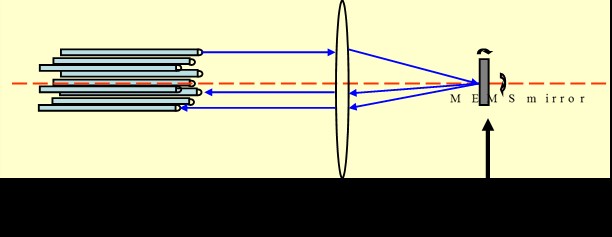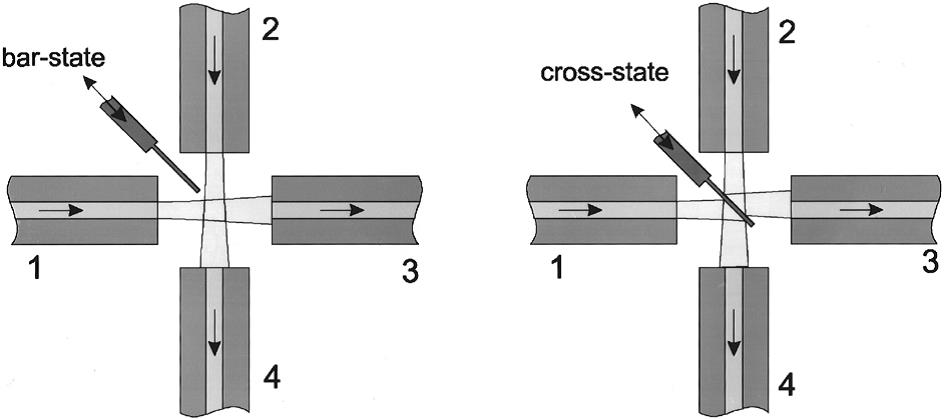Mechanical optical switches & MEMS optical switches
Release:
Release:
In the optical fiber communication system, the optical switch (OS) is mainly used to realize the physical switching of optical signals or other logic operations in the optical path, and is mostly used in optical cross-connection OXC (Optical Cross-connect) technology as a key device for switching optical paths.
The optical switch has one or more selectable transmission windows, which can be divided into 2×2, 1×N, M×N port configurations. Optical switches have a wide range of applications in optical fiber communication systems, and their implementation technologies are diverse, including: mechanical optical switches, thermal optical switches, acousto-optic switches, electro-optical switches, magneto-optical switches, liquid crystal optical switches and MEMS optical switches, and so on. Among them, mechanical optical switches and MEMS optical switches are two types of optical switches that are widely used at present.
Mechanical optical switches work by redirecting optical signals by physically moving optical fibers with the help of mechanical devices. By moving the prism or directional coupler, the light at the input is directed to the port of the desired output. There are three main types of mechanical optical switches: one is to use prism switching optical path technology, the other is to use mirror switching technology, and the third is to switch optical paths through mobile optical fiber.

Mechanical optical switch
MEMS optical switches are based on micro-electro-mechanical systems, which use optical micromirrors or optical mirror arrays to change the propagation direction of the beam to achieve optical path switching. The principle of MEMS optical switch is very simple, when the optical exchange is carried out, through the drive of electrostatic force or magnetoelectricity, move or change the angle of the MEMS micromirror, and switch the input light to the different output ends of the optical switch to realize the switching and switching of the optical path. The schematic diagram is shown in the figure below:

The working principle of MEMS optical switches
The principle of the 2×2 port optical switch based on MEMS technology is shown in the figure, four optical waveguides are arranged in four directions, and a vertical MEMS micromirror is set in a 45° angle direction. When the micromirror does not intervene in the optical path, the beams from waveguides 1 and 2 are coupled to waveguides 3 and 4, respectively, and the port connection states are 1→3 and 2→4, which is the pass-through state; When the micromirror is inserted into the optical path, the beams from waveguides 1 and 2 are reflected by the micromirror and coupled to ports 4 and 3, respectively, and the port connection states are 1→4 and 2→3, which is a cross state.

The working principle of the 2×2-port MEMS optical switch, left: pass-through state, right: crossover state
The optical switch has one or more selectable transmission windows, which can be divided into 2×2, 1×N, M×N port configurations. Optical switches have a wide range of applications in optical fiber communication systems, and their implementation technologies are diverse, including: mechanical optical switches, thermal optical switches, acousto-optic switches, electro-optical switches, magneto-optical switches, liquid crystal optical switches and MEMS optical switches, and so on. Among them, mechanical optical switches and MEMS optical switches are two types of optical switches that are widely used at present.
Mechanical optical switches work by redirecting optical signals by physically moving optical fibers with the help of mechanical devices. By moving the prism or directional coupler, the light at the input is directed to the port of the desired output. There are three main types of mechanical optical switches: one is to use prism switching optical path technology, the other is to use mirror switching technology, and the third is to switch optical paths through mobile optical fiber.

Mechanical optical switch
MEMS optical switches are based on micro-electro-mechanical systems, which use optical micromirrors or optical mirror arrays to change the propagation direction of the beam to achieve optical path switching. The principle of MEMS optical switch is very simple, when the optical exchange is carried out, through the drive of electrostatic force or magnetoelectricity, move or change the angle of the MEMS micromirror, and switch the input light to the different output ends of the optical switch to realize the switching and switching of the optical path. The schematic diagram is shown in the figure below:

The working principle of MEMS optical switches
The principle of the 2×2 port optical switch based on MEMS technology is shown in the figure, four optical waveguides are arranged in four directions, and a vertical MEMS micromirror is set in a 45° angle direction. When the micromirror does not intervene in the optical path, the beams from waveguides 1 and 2 are coupled to waveguides 3 and 4, respectively, and the port connection states are 1→3 and 2→4, which is the pass-through state; When the micromirror is inserted into the optical path, the beams from waveguides 1 and 2 are reflected by the micromirror and coupled to ports 4 and 3, respectively, and the port connection states are 1→4 and 2→3, which is a cross state.

The working principle of the 2×2-port MEMS optical switch, left: pass-through state, right: crossover state
